.jpg)
Volkswagen Caddy Review
.jpg)
Introduction
You’d be forgiven for thinking that the Volkswagen Caddy Life is a van. It does look like one, after all. And, in some forms, it is a van. But this particular Caddy is set up for passengers. It takes the Volkswagen Caddy Cargo van, adds rear windows and seats and some extra creature comforts, and voila!
You get a massively spacious and practical car with room for five or seven, and a huge amount of luggage.
What it lacks in style it makes up for in usability, and it’s pretty good to drive too.
Select's rating score* - 4.0 / 5
At a Glance
In an age where the SUV is all-popular, the Caddy seems almost quaint; it’s a more traditional people carrier that isn’t trying to look particularly sporty or provide a high driving position. In fact, it’s essentially a van with rear seats.
But that makes it a very spacious and practical proposition, particularly for families. Underneath the boxy styling it actually shares the same mechanical bits as a Volkswagen Golf, which makes it better to drive than a lot of other cars based on commercial vehicles.
The Caddy comes in standard form, or as the Caddy Maxi, which is longer and has an extra row of seats, letting you carry up to seven people. Sliding rear doors make for easy access and exit, and there’s a choice of petrol and diesel engines.

Key Features
The Caddy’s key and overriding selling point is practicality. Sure, there’s been a decent effort to make it look slightly stylish, but essentially this is a big, mobile box with either five or seven seats, and a huge boot. It’s targeted at families, with myriad storage spaces including drawers and shelves in the roof. The sliding rear doors make it really easy to load kids in and out without the risk of banging someone else’s paintwork.
There are two body styles. The standard Caddy has five seats over two rows, while the Caddy Maxi has seven seats with an extra row of seats in the back. Two trims are available - standard and Life. The standard car is relatively basic, but the Life model has most of the features you’d expect in a modern car.

The Caddy’s engineering is worth making a point of too; because it’s based on the Volkswagen Golf, it’s more sophisticated under the surface and therefore better to drive than a lot of its rivals. There are three engine choices: two diesels, one with an automatic gearbox, and a petrol option with a manual gearbox.
Performance & Drive
The Caddy is, in effect, a van – it’s even produced through Volkswagen’s commercial vehicles division – so you’d be forgiven for not having high hopes about its driving prowess. But it shares a lot of its engineering with the Golf, and that means it’s far better than you may expect.
Body roll is kept well contained through the corners, the steering has lots of feel and the ride is pretty comfortable, especially when the car’s loaded up with passengers and/or stuff. The Caddy still isn’t a car for driving enthusiasts, and you’d be hard-pressed to say it’s fun, but it’s very capable.
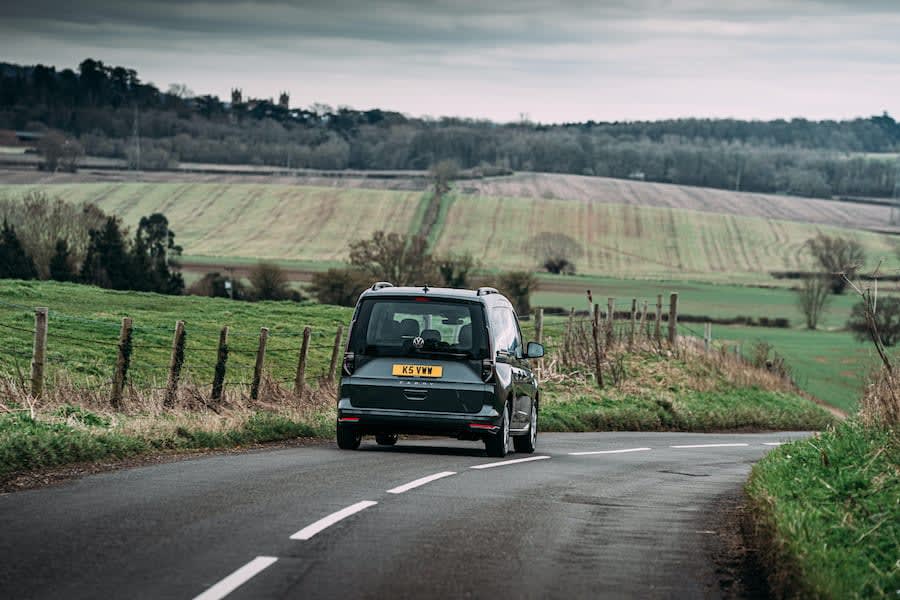
Volkswagen has kept the choice simple when it comes to power. The entry-level car is petrol-powered, with a 112bhp, 1.5 TSI petrol engine and a six-speed manual gearbox. This is a well-proven engine, used across other Volkswagen products, but many may prefer the extra hauling power of a diesel, especially with a fully loaded car. In which case, there’s a 2.0 TDI with 100bhp and a manual gearbox, or a 120bhp version with a seven-speed automatic gearbox.
All of the engines are designed with efficiency in mind, so none will blow your mind with their power, but they’re all adequate for the job. The more powerful diesel engine would be our pick, as it’s got a bit of extra shove when you need it, and the automatic gearbox makes life simple, but it’s not essential if you don’t want to spend the extra cash.
Running costs & Emissions
Leasing costs for the Caddy are very reasonable, starting (at the time of writing) at around £225. That’s considerably less than rivals like the Ford Tourneo Connect, slightly less than the Peugeot Rifter, and around the same as the Citroen Berlingo. Overall, leasing a Volkswagen Caddy looks like very good value.
Fuel costs are decent too. Officially, you’re looking at around 55-58mpg from the diesel models, or around 44mpg for the petrol. All these figures are very reasonable considering the size (and non-aerodynamic shape) of the Caddy. Those numbers will drop slightly in seven-seat Maxi models.
As there are no plug-in hybrid or electric models of the Caddy, company car tax will be higher than electrified rivals like the Vauxhall Combo Life or Nissan e-NV200, although both those rivals are considerably more to lease. Emissions for the Caddy are between 126 and 155g/km of CO2, which means company car tax brackets between 29% and 36%, depending on model.
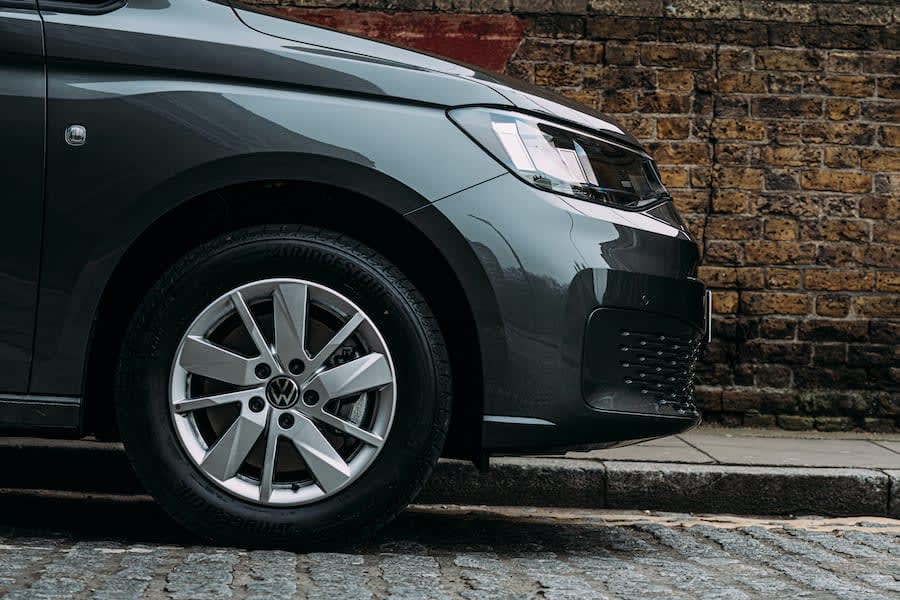
Interior & Technology
Many van-based people carriers can feel rather utilitarian inside, with a focus on hard-wearing plastics rather than a premium feel. This means that stepping into the Caddy is a pleasant surprise. Once again, Volkswagen has raided the Golf’s parts bin, which means a more upmarket feel than many customers will expect. Yes, there is still quite a bit of hard plastic on show, betraying its working roots, but that’s likely to be a plus for plenty of owners with hard-wearing children.
The infotainment tech will depend on what model you go for. Standard Caddys get a fairly rudimentary touchscreen that features Bluetooth, DAB radio and not much more. Those looking for more up-to-date tech will want to go for the Life model, which has a 8.25-inch screen that adds Apple CarPlay and Android Auto for smartphone connectivity.
You can also add a 10.0-inch screen as an option, which brings with it satellite navigation, but it also adds a chunk to the price. A Digital Cockpit is also optional on Life models, which replaces traditional analogue dials with a configurable screen behind the steering wheel.
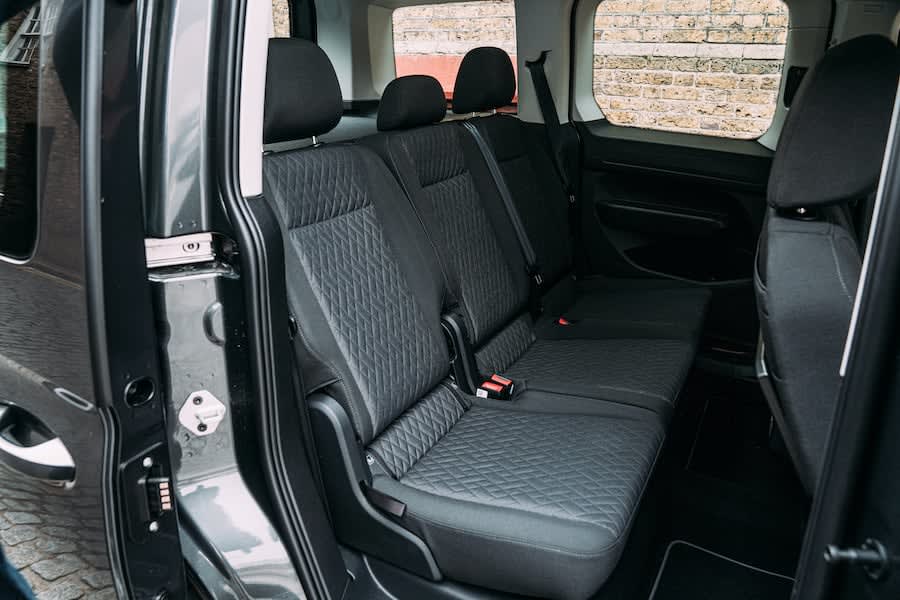
A slightly curious design choice has the air conditioning controls mounted below the touchscreen, in the form of touch-sensitive sliders. They succeed in reducing the visual clutter of the dashboard, but we can’t help thinking that good old-fashioned buttons or dials would be easier to use, especially while on the move.
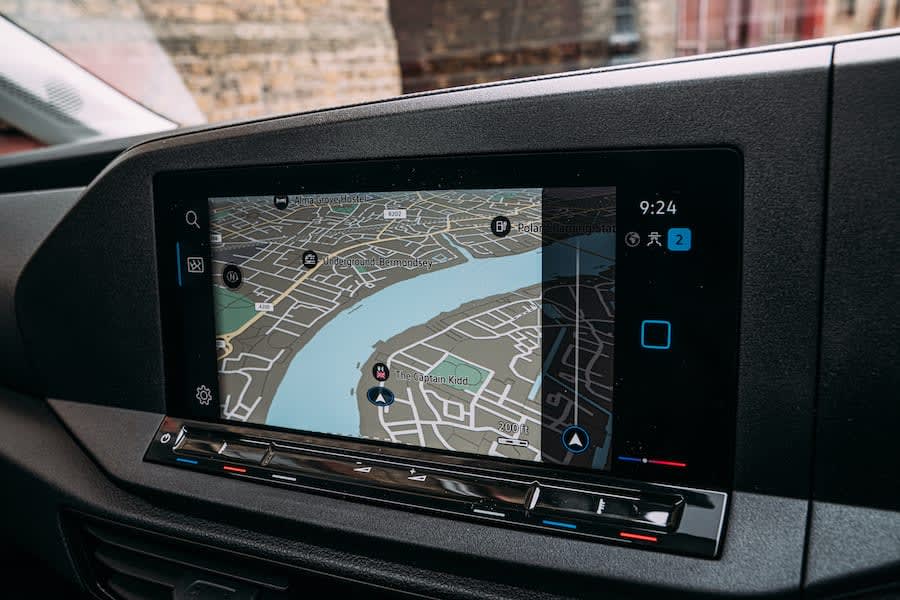
Practicality & Boot Space
Practicality is the Caddy’s trump card, and one it plays very well. There’s loads of space inside, both in the front and back seats, with acres of head and leg space even for tall adults. Three grown-ups should have no issues on the second row. The Maxi models are longer and have a third row of seats. Both second-row and third-row seats can be completely removed if you like, essentially giving you a van, although you’ll need to set aside some time to wrestle them out (and have somewhere to keep them). The downside is that they don’t fold flat in the way that most traditional cars let you.
That said, the boot is pretty massive, with 1,213 litres of space in the Caddy and 446 in the Caddy Maxi with the third row of seats up. Those numbers are bigger than just about anything you’ll get in, for example, a seven-seat SUV. The lip at the boot entrance is nice and low if you need to load large objects in.
General storage and practicality is great too. The sliding rear doors make loading in kids a doddle, even in tight parking spaces, and there are loads of cubby holes to store odds and ends, including drawers under the front seats on Life models, and overhead storage above the front seat.

Safety
The Caddy hasn’t been tested by independent safety organisation Euro NCAP, but Volkswgen has a long record of maximum five-star scores, so hopes are high that this model should be just as safe as its stablemates. Several modern safety systems are included as standard, including automatic emergency braking, which will intervene if you don’t respond to an impending collision. You can add systems like adaptive cruise control and a blind-spot warning feature as options.
All models have Isofix child seat mounting points on the outer rear seats, and front, side and curtain airbags.
Options
The Caddy line is simple; there are two trims, and two body styles. If you choose the standard Caddy you get five seats, and if you go for the Maxi you’ll get a longer car with seven seats.
The entry-level trim is simply the standard car with no special name. It’s relatively bare-bones by the standards of non-van-based rivals, with steel wheels, halogen headlights and a manual air-conditioning system. The infotainment system has Bluetooth, DAB radio and two USB-C slots, but no modern smartphone connectivity.
If you want something with a few more toys, we’d recommend going for the Life model. This adds 16-inch alloy wheels (17-inch on the Maxi), and the more advanced infotainment system. You also get the under-seat drawers, power-adjustable mirror and a removable waste bin in the door pocket, as well as parking sensors front and rear.
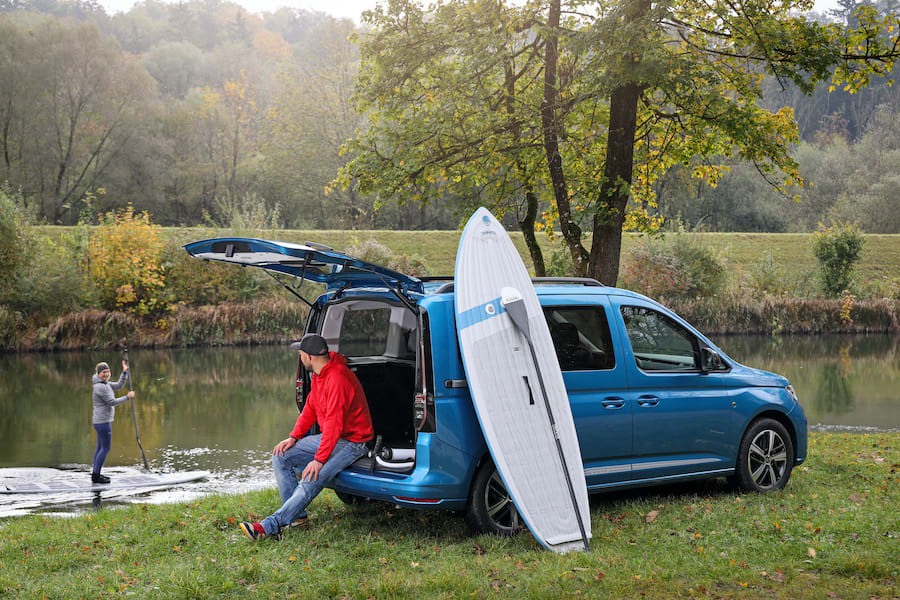
There are also plenty of options to consider, including various 16, 17 and 18-inch alloy wheel designs, and numerous paint colours. You can upgrade the front seats to more comfortable versions, ditch the rear seats on the Maxi for even more boot space, or add rear seats to the regular Caddy (although doing so will dramatically reduce the boot size).
Other additions include the more advanced infotainment system, wireless phone charging, extra safety systems and a rear-view camera, as well as heated seats, climate control air conditioning and a heated windscreen.
Rival Cars
As a van-based MPV, the Caddy is predominantly up against cars like the Peugeot Rifter, Citroen Berlingo and Ford Tourneo Connect. They all boast similar levels of practicality, and arguably the Peugeot and Citroen are better looking, but the Volkswagen is better to drive than any of them. However, if you’re after an MPV that’s genuinely fun behind the wheel, then look at the Ford S-Max, which is a more traditional people carrier.
If budget is important, Toyota’s big Proace Verso is worth checking out too, with space for up to nine and a very reasonable leasing cost.
There’s no hybrid or electric option in the Caddy. For that, look at the electric Vauxhall Combo Life or Nissan e-NV200. If your budget is flexible, then look also at the Mercedes-Benz EQV, which is both electric and much more fancy.
Verdict & Next Steps
The Volkswagen Caddy is a great example of a van-based people carrier. Like its peers, it sacrifices style for practicality, and does so very well. Some may miss some of the classiness and niceties of traditional cars, but for the most part the Caddy makes up for that with the sheer amount of space inside. The sliding doors and removable seats are great too. What sets it apart is the affordable leasing costs and the quality of the driving experience, which is better than we dared hope for. If you’ve got a big family and don’t want to spend a fortune on a big SUV, then the Caddy is well worth checking out.
Where to next?
View latest VW Caddy Life leasing deals - from just £226.63 per month inc VAT**
Looking for a great leasing deal? Check out our incredible range of car lease deals
New MPV? Read our latest Car Reviews and find the right model for you
Want to know more about leasing? Take a look at our comprehensive Leasing Guides
Interested in everything motoring? Why not catch up on all the latest Car Leasing News.
**Score based on Select’s unique meta score analysis, taking into account the UK’s top five leading independent car website reviews of the VW Caddy Life
**Correct as of 19/10/2021. Based on 9 months initial payment, 5,000 miles over a 48 month lease. Initial payment equivalent to 9 monthly payments or £3652.29 Ts and Cs apply. Credit is subject to status.





















